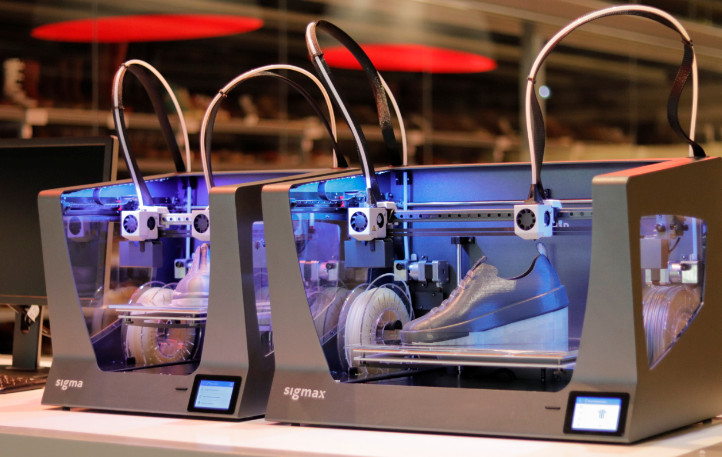3D printing—specifically with the use of BCN3D’s 3D Sigma and Sigmax printers—has allowed Spanish footwear multinational, Camper, to journey down paths they never expected with their line of footwear; experiencing so many of the benefits of this progressive (and often seemingly futuristic) technology they are now able to create designs that previously may have been impossible—not to mention the element of flexibility they are enjoying with materials, as well as the ability to fabricate new iterations on the spot.
 Based on the Island of Mallorca, in Spain, Camper’s team has become immersed in 3D printing and additive manufacturing, with creativity flowing daily amidst their on-site desktop printers. In a recent case study, they explained that with the ‘giant leap’ into 3D printing, their team was able to enhance their design capabilities, along with ‘streamlining the creative processes of future collections.’
Based on the Island of Mallorca, in Spain, Camper’s team has become immersed in 3D printing and additive manufacturing, with creativity flowing daily amidst their on-site desktop printers. In a recent case study, they explained that with the ‘giant leap’ into 3D printing, their team was able to enhance their design capabilities, along with ‘streamlining the creative processes of future collections.’
Each set of footwear is designed a year ahead of time, and the Camper team states that their shoes offer a geometric complexity, requiring technology capable of manufacturing their men’s, women’s, and children’s collections with great accuracy.
“Working with a 3D printer is very useful because if we have an idea in mind, together with a technician, we can obtain quick and direct results for the dimensions of components. This enhances our ability to be reactive,” said Job Willemsen, Senior Designer at Camper.
The 3D Sigma and Sigmax printers allow the Camper team to use materials flexible and capable enough of rendering extremely realistic prototypes. They can design products more rapidly, with even higher quality. The need for molds is eliminated, and intricate design elements can be integrated into new products.
“Because we have a dual-extruder system, we can use water-soluble print material. As a result, we can work with more complex geometric shapes and reduce design time for the collection,” said Jordi Guirado, Product Engineer at Camper.
The design process at Camper these days involves the team getting together and discussing new shapes for designs—each day—with their technical department. The team then creates 3D printed models, which are ready by the next day. This level of speed registers in stark comparison with more conventional methods that meant models and prototypes might not be ready for up to a month. Now, decision-making amongst the team is more rapid, and both designs and the impending results are greatly improved. Products are lightweight, ergonomic—and accommodate what customers are requesting these days.
“With various 3D printers on site, Camper’s designers now have new designs literally in the palms of their hands. This is a huge advantage for designers because they can now validate volumes, dimensions and geometric shapes that they could not visualize with a digital model. If designers can print a shoe model in 3D the next day, the design team can take their creative potential further,” said Xavier Martínez Faneca, CEO of BCN3D. “With collaboration, they can really achieve the product they are looking for.”
Camper has been around since 1975, created by Lorenzo Fluxa. His goal was to create footwear unlike any other—with his foundation rooted in the shoemaking business of his family—beginning with his grandfather in 1877, who brought the first sewing machines to Mallorca. Fast forward to the present, and Camper shoes are still made in Mallorca. The team crafts about 500 models each season—with one difference these days: they are in stores in over 40 countries!
3D printing is having a huge impact on the fashion, and footwear industry, from high heels to ballet shoes and athletic shoes.
What do you think of this news? Let us know your thoughts! Join the discussion of this and other 3D printing topics at 3DPrintBoard.com.
[Source / Images: Camper case study]Subscribe to Our Email Newsletter
Stay up-to-date on all the latest news from the 3D printing industry and receive information and offers from third party vendors.
You May Also Like
3D Printing Financials: Steakholder Foods Balances Losses and 3D Printed Tech Advances in 2023
A pioneer in the field of 3D printed meat and fish, Steakholder Foods (Nasdaq: STKH) disclosed its 2023 financial results, a year highlighted by technological progress but overshadowed by financial...
3D Printing Financials: Protolabs’ Q1 3D Printing Revenue is Flat, Company Advances in Technology Push
Protolabs (NYSE: PRLB) has kicked off 2024 with a mild boost in revenue, revealing how the Minnesota-based company manages to adapt and thrive even in uncertain market conditions. While the...
Supply Chain Management and the Role of 3D Printing Digital Inventories
As the additive manufacturing (AM) industry grows beyond its humble roots as a rapid prototyping technology, it has been adopted by some of the world’s leading companies to produce not...
3D Printing Financials: Materialise’s Profitability Amid Revenue Dip in Q1 2024
Materialise (Nasdaq: MTLS) has released its first-quarter earnings for 2024, highlighting a challenging quarter with some key advances despite a dip in revenue. While navigating a mixed performance across its...



































